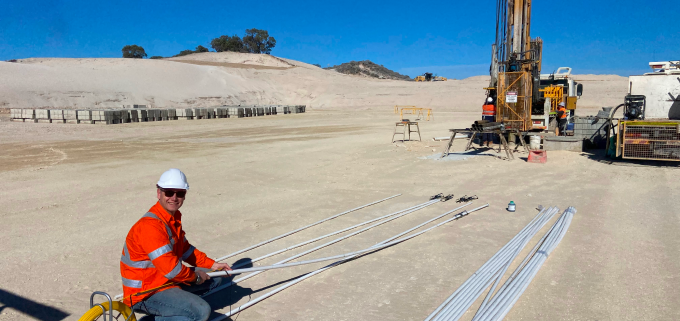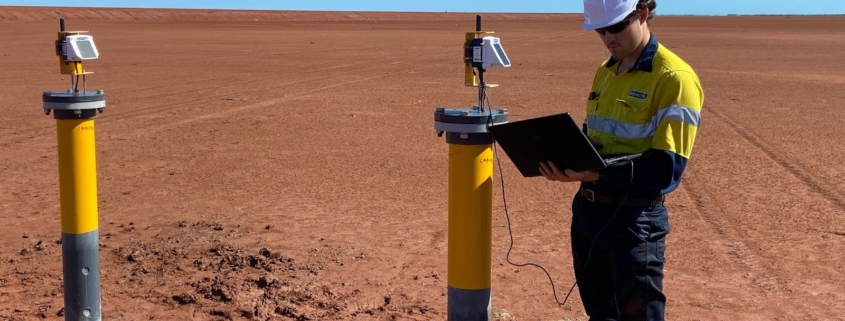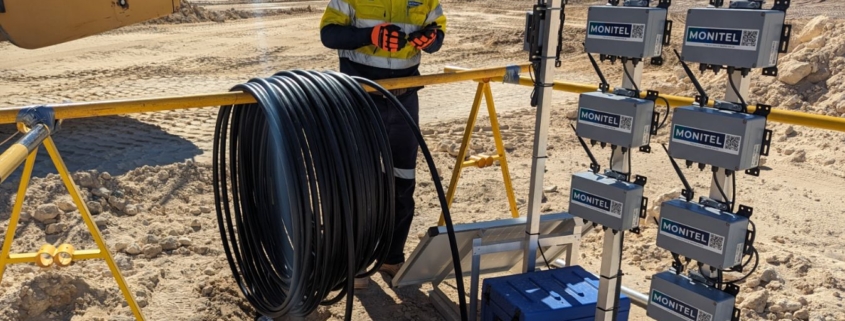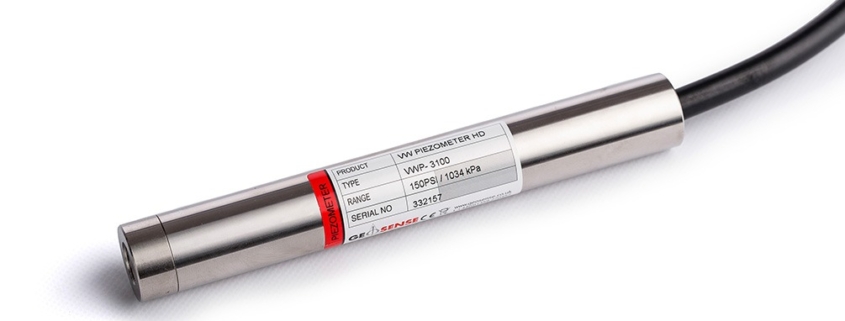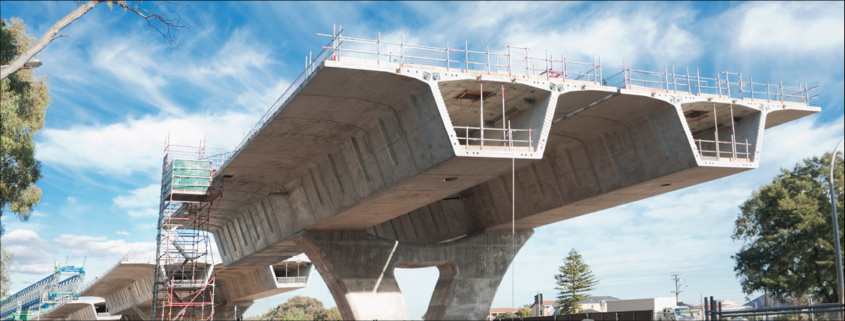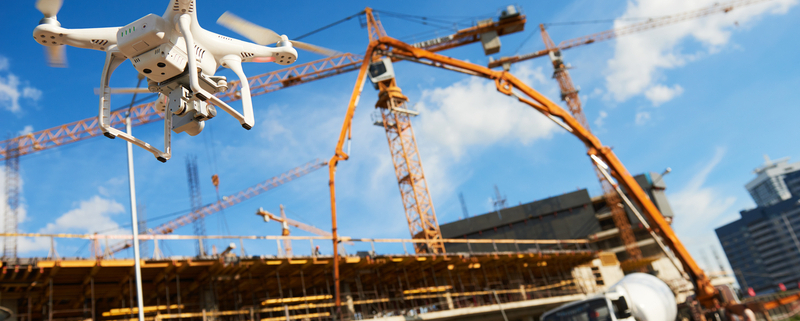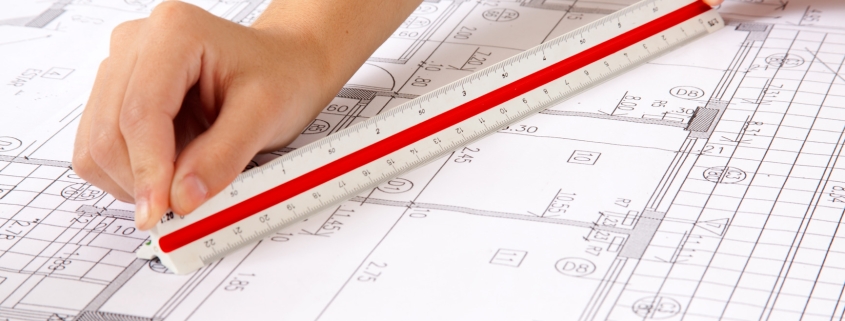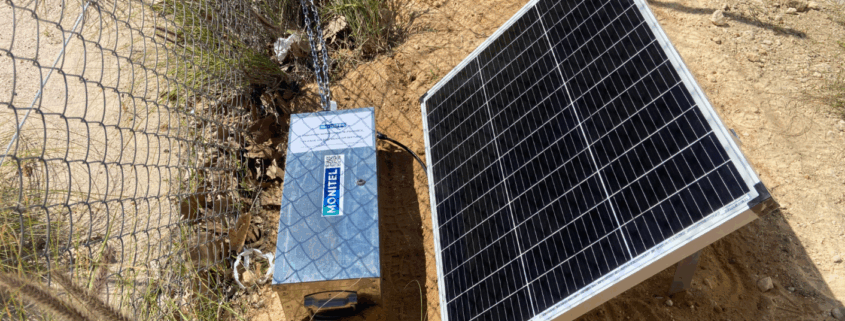Choosing the Right Piezometer for Your Project
Pore pressure plays a critical role in the behaviour of soil and rock, especially in large infrastructure, mining and geotechnical projects. Choosing the right piezometer can prove the difference in monitoring that pressure accurately and effectively.
Monitel designs and installs monitoring systems using a wide range of piezometer types suited to the specific needs of each site. Our systems can assist in detecting seepage, assessing stability and preventing failures in structures ranging form embankments to tailings dams.
This article explains six piezometer types commonly used in Western Australia. If you are still unsure what suits your project best, you can speak with a member of the Monitel team at admin@monitel.com.au or call (08) 6219 8284.
VWPs attach a tensioned wire to a diaphragm. When pore pressure changes, the diaphragm moves and alters the wire’s frequency, which is then converted into a signal representing pressure. VWPS offer remote data access, allowing quick responses to anomalies issues and analysis of data trends.
The Monitel team deploys VWPs at sites across Western Australia, notably at the Alkimos Desalination Plant. Installed at specified locations, VWP data proved important in understanding soil stability in an area earmarked for a tank structure.
Applications:
- Long-term geotechnical monitoring
- Embankments, dams and boreholes
- Sites requiring automated or remote data access
Advantages:
- High accuracy and long-term stability
- Immune to electrical interference and cable length issues
- Suitable for use with data loggers and cloud-based systems
Standpipe Piezometer
In a standpipe piezometer, a slotted PVC pipe is installed in a borehole. Groundwater enters the pipe and the water level is measured manually using a dip tape or water level meter, providing a representation of pore water pressure at that depth.
Unlike a VWP, these sensors do not provide real time, remote data. It is also important to note that they do not always perform reliable when measuring rapid pressure changes.
Our team will deploy a standpipe piezometer where manual readings are sufficient or even more suitable. This is often during basic groundwater level tracking for excavation or site preparation.
Applications:
- Short- to medium-term groundwater monitoring
- Projects with limited budget or where automation is unnecessary
Advantages:
- Simple to install
- Low cost
- Useful for checking static water levels over time
High-Temperature Vibrating Wire Piezometer
High temperature VWPs are specially designed to operate in high-temperature environments, boosted by modified materials and thermal protection. They work in the same way as any other vibrating wire piezometer.
Monitel has utilised these sensors in tailings dams or buried environments where pore water temperatures exceed 80°C.
Applications:
- Tailings dams with elevated pore temperatures
- Other geothermal or high-heat industrial applications
Advantages:
- Performs reliably in temperatures where standard sensors would fail
- Maintains signal integrity in extreme conditions
- Ideal for long-term projects with thermal variation
Drive-In Piezometer
Drive-in piezometers are pre-assembled and driven into the ground using rods or CPT rigs, without the need for drilling or casing. They measure pore water pressure at the depth of the installation. These sensors are best suited to soft soils and are ideal for rapid deployment in tailings dams or embankments.
We will often deploy a drive-in piezometer where conventional boreholes are not possible. This may be on a site with wet foundations or in soft tailings.
Applications:
- Soft ground
- Tailings dams
- Sites with limited access or where quick installation is critical
Advantages:
- Quick and straightforward installation
- Minimal site disturbance
- Suitable for rapid-deployment monitoring programs
Strain Gauge Piezometer
Similar to a VWP, strain gauge piezometers use an electrical strain gauge to measure diaphragm deflection. As pore pressure changes, the strain on the diaphragm alters the electrical resistance. The strain is then converted into a measurable signal.
It is worth noting that strain gauge piezometers are more susceptible to electrical noise and power loss than VWPs.
Monitel will often choose this sensor in environments where pressure changes quickly. This may be beneath vibrating machinery or within variable load zones.
Applications:
- Projects that require a sensor with fast response times
- Projects with monitoring systems that are electrically integrated
Advantages:
- Fast reaction time
- Compatible with digital systems
- Provides continuous electrical output
Pressure Transducer Piezometers
Pressure transducer piezometers convert pressure into a continuous electrical signal using strain gauge or MEMS technology. This sensor integrates well with automated systems, as the signal is transmitted in real time.
The Monitel team choose pressure transducer piezometers for environmental boreholes, water management sites and compliance projects. Their capacity for continuous monitoring makes them a suitable option for these activities.
Applications:
- Borehole water level monitoring
- Environmental and groundwater compliance projects
Advantages:
- Real-time output for quick intervention
- Integrates with cloud-based monitoring
- Suited to both shallow and deep installations
Monitel: Perth Based Piezometer Supplier
Our team works closely with site managers and engineers to select the most appropriate sensors for your project. We make sure to consider site conditions, monitoring duration, regulatory requirements and any other critical factors.
At Monitel, we pride ourselves on a technology-agnostic approach – meaninng that we’re not tied to any one product or brand. We will always choose the sensor that meets your project’s needs, not ours.
If you would like advice about the piezometer thats best fits your project, you can contact a member of our team at admin@monitel.com.au or call (08) 6219 8284.


